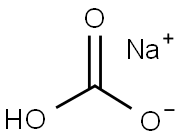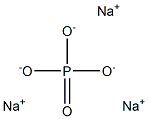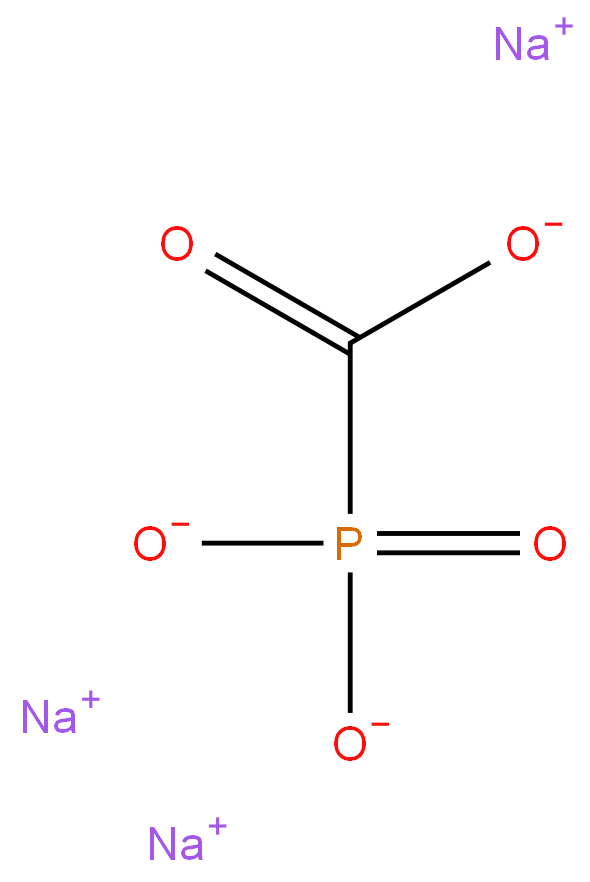Foscarnet sodium
Synonym(s):Foscarnet;Foscarnet sodium hexahydrate;Phosphonoformic acid trisodium salt hexahydrate;Sodium phosphonoformate tribasic hexahydrate
- CAS NO.:63585-09-1
- Empirical Formula: CNa3O5P
- Molecular Weight: 191.95
- MDL number: MFCD00013973
- EINECS: 695-653-7
- SAFETY DATA SHEET (SDS)
- Update Date: 2024-11-28 18:20:31

What is Foscarnet sodium?
Description
Foscamet sodium is a new, injectable antiviral agent useful in the treatment of severe cytomegalovirus retinitis in immunodepressed patients. Foscarnet sodium acts by inhibiting viral-specific DNA polymerases; its side-effects include decreased hemoglobin levels and acute tubular necrosis.
Originator
Astra (Sweden)
The Uses of Foscarnet sodium
Inhibits viral DNA polymerase and reverse transcriptase.
Foscarnet is the only antiviral approved by the FDA for the treatment of acyclovir-resistant HSV infections, a growing problem in the AIDS population. Foscarnet does not require HSV-encoded thymidine kinase. Foscarnet therapy reduces the healing time, pain, and viral shedding. It is administered intravenously, 40 mg/kg every 8 to 12 hours within 7 to 10 days in patients suspected of having acyclovir-resistant herpes simplex infection. Foscarnet is administered for 10 days. Associated side effects include azotemia secondary to nephrotoxicity, hyperphosphatemia, hypocalcemia, anemia, nausea, vomiting, and genital ulceration. Patients may eventually develop resistant strains. Preliminary trials indicate that topical 1%foscarnet cream may have some benefit for the treatment of acyclovir-resistant mucocutaneous HSV infection in patients with AIDS.
What are the applications of Application
Foscarnet sodium is a structural mimic of the anion pyrophosphate that selectively regulates DNA polymerase
Definition
ChEBI: The trisodium salt of phosphonoformic acid. It is used as an antiviral agent in the treatment of cytomegalovirus retinitis (CMV retinitis, an inflamation of the retina that can lead to blindness) and as an alternative to ganciclovir for AIDS patients who r quire concurrent antiretroviral therapy but are unable to tolerate ganciclovir due to haematological toxicity.
Manufacturing Process
423 g (4.77 mol) of sodium hydroxide is added to 400 ml of water. The
solution is heated to about 50°C and 167 g (0.795 mol) of triethyl
phosphonoformate is added. The reaction mixture is then heated to about
90°C and ethanol formed is distilled off. After about 1 hour at 90-95°C the
reaction mixture is cooled to about 20°C and the product is filtered off. The
yield of trisodium phosphonoformate hexahydrate wet is 248 g.
The wet substance is recrystallized in 570 ml of water by heating to 423 g
(4.77 mol) of sodium hydroxide liquid conc. is added to 400 ml of water. The
solution is heated to about 50°C and 167 g (0.795 mol) of triethyl
phosphonoformate is added at this temperature. The reaction mixture is then
heated to about 90°C and ethanol formed is distilled off. After about 1 hour at
90-95°C the reaction mixture is cooled to about 20°C and the product is
filtered off. The yield of trisodium phosphonoformate hexahydrate wet is 248
g.
The wet substance is recrystallized in 570 ml of water by heating to 90°C in
order to obtain a clear solution and then cooling to about 20°C. After filtration
and washing with 50 ml of water at 18-22°C 187 g (74% of theoretical yield)
of trisodium phosphonoformate hexahydrate is obtained. This substance
contains about 2% free water, which can be eliminated by drying.
brand name
Foscavir (AstraZeneca).
Therapeutic Function
Antiviral
General Description
pyrophosphateanalog that inhibits replication in herpesviruses(CMV, HSV, and VSV) and retroviruses (HIV).Foscarnet(Foscavir) is taken up slowly by the cells and does not undergosignificant intracellular metabolism. Foscarnet is a reversible,noncompetitive inhibitor at the pyrophosphatebindingsite of the viral DNA polymerase and RT. Theultimate effect is inhibition of the cleavage of pyrophosphatefrom deoxynucleotide triphosphates and a cessation ofthe incorporation of nucleoside triphosphates into DNA(with the concomitant release of pyrophosphate).Becausethe inhibition is noncompetitive with respect to nucleosidetriphosphate binding, foscarnet can act synergistically withnucleoside triphosphate antimetabolites (e.g., zidovudineand didanosine triphosphates) in the inhibition of viral DNAsynthesis. Foscarnet does not require bioactivation by viralor cellular enzymes and, hence, can be effective against resistantviral strains that are deficient in virally encoded nucleosidekinases.
Foscarnet is a second-line drug for the treatment of retinitiscaused by CMV in patients with AIDS. The drug causesmetabolic abnormalities including increases or decreases inblood Ca2 levels. Nephrotoxicity is common, and this sideeffect precludes the use of foscarnet in other infections causedby herpesvirus or as single-agent therapy for HIV infection.Foscarnet is an excellent ligand for metal ion binding,which undoubtedly contributes to the electrolyte imbalancesobserved with the use of the drug.Hypocalcemia, hypomagnesemia,hypokalemia, and hypophosphatemia and hyperphosphatemiaare observed in patients treated with foscarnet.Side effects such as paresthesias, tetani, seizures, and cardiacarrhythmias may result.
Clinical Use
Foscarnet sodium was approved by the U.S. FDA for the treatment of CMV retinitis in patients with AIDS. In combination with ganciclovir, the results have been promising, even in progressive disease with ganciclovir-resistant strains. Foscarnet sodium also is effective in the treatment of mucocutaneous diseases caused by acyclovir-resistant strains of HSV and VZV in patients with AIDS. Foscarnet sodium is administered IV at 60 mg/kg three times a day for initial therapy and at 90 to 120 mg/kg daily for maintenance therapy. The plasma-half life is 3 to 6 hours. Foscarnet sodium penetrates into the CSF and the eye. The drug is neurotoxic, and common adverse effects include phlebitis, anemia, nausea, vomiting, and seizures. Foscarnet sodium carries the risk of severe hypocalcemia, especially with concurrent use of IV pentamidine. Foscarnet sodium used with zidovudine (ZDV) has an additive effect against CMV and acts synergistically against HIV.
Drug interactions
Potentially hazardous interactions with other drugs
Ciclosporin: may cause acute renal failure in
combination.
Pentamidine: increased risk of hypocalcaemia with
parenteral pentamidine
Metabolism
There is no metabolic conversion of foscarnet and it is eliminated by the kidneys as unchanged drug mainly through glomerular filtration, with some active tubular secretion.
Properties of Foscarnet sodium
| Melting point: | >250° |
| storage temp. | Inert atmosphere,Room Temperature |
| form | Solid |
| color | White to off-white |
| Water Solubility | ≥ 24.9mg/mL in water |
| CAS DataBase Reference | 63585-09-1(CAS DataBase Reference) |
Safety information for Foscarnet sodium
| Signal word | Warning |
| Pictogram(s) |
 Exclamation Mark Irritant GHS07 |
| GHS Hazard Statements |
H319:Serious eye damage/eye irritation |
| Precautionary Statement Codes |
P305+P351+P338:IF IN EYES: Rinse cautiously with water for several minutes. Remove contact lenses, if present and easy to do. Continuerinsing. |
Computed Descriptors for Foscarnet sodium
Foscarnet sodium manufacturer
Gland Pharma Ltd
New Products
(S)-3-Aminobutanenitrile hydrochloride 4-Methylphenylacetic acid N-Boc-D-alaninol N-BOC-D/L-ALANINOL Tert-butyl bis(2-chloroethyl)carbamate 3-Morpholino-1-(4-nitrophenyl)-5,6-dihydropyridin- 2(1H)-one Furan-2,5-Dicarboxylic Acid Tropic acid 1-Bromo-3,5-Di-Tert-Butylbenzene S-2-CHLORO PROPIONIC ACID ETHYL ISOCYANOACETATE 2-Bromo-1,3-Bis(Dimethylamino)Trimethinium Hexafluorophosphate 4-IODO BENZOIC ACID 3-NITRO-2-METHYL ANILINE 1-(2,4-DICHLOROPHENYL) ETHANAMINE (2-Hydroxyphenyl)acetonitrile 4-Bromopyrazole 2-(Cyanocyclohexyl)acetic acid 4-methoxy-3,5-dinitropyridine 1-(4-(aminomethyl)benzyl)urea hydrochloride 2-aminopropyl benzoate hydrochloride diethyl 2-(2-((tertbutoxycarbonyl)amino) ethyl)malonate tert-butyl 4- (ureidomethyl)benzylcarbamate Ethyl-2-chloro((4-methoxyphenyl)hydrazono)acetateRelated products of tetrahydrofuran








You may like
-
 63585-09-1 Foscarnet sodium 98%View Details
63585-09-1 Foscarnet sodium 98%View Details
63585-09-1 -
 63585-09-1 98%View Details
63585-09-1 98%View Details
63585-09-1 -
 Foscarnet sodium >98% (HPLC) CAS 63585-09-1View Details
Foscarnet sodium >98% (HPLC) CAS 63585-09-1View Details
63585-09-1 -
 Foscarnet sodium 95.00% CAS 63585-09-1View Details
Foscarnet sodium 95.00% CAS 63585-09-1View Details
63585-09-1 -
 1975-50-4 98%View Details
1975-50-4 98%View Details
1975-50-4 -
 2-HYDROXY BENZYL ALCOHOL 98%View Details
2-HYDROXY BENZYL ALCOHOL 98%View Details
90-01-7 -
 14714-50-2 (2-Hydroxyphenyl)acetonitrile 98+View Details
14714-50-2 (2-Hydroxyphenyl)acetonitrile 98+View Details
14714-50-2 -
 118753-70-1 98+View Details
118753-70-1 98+View Details
118753-70-1